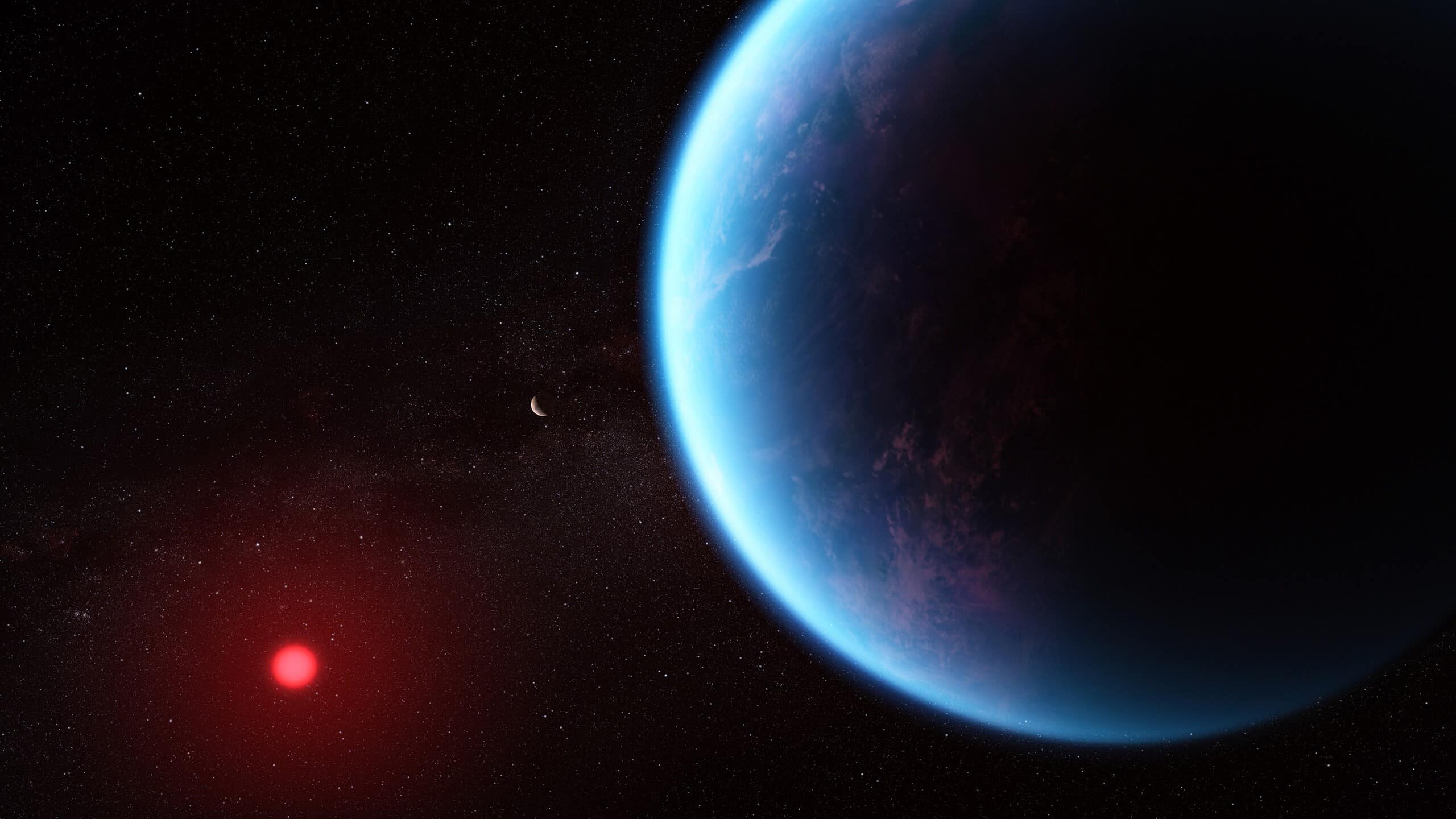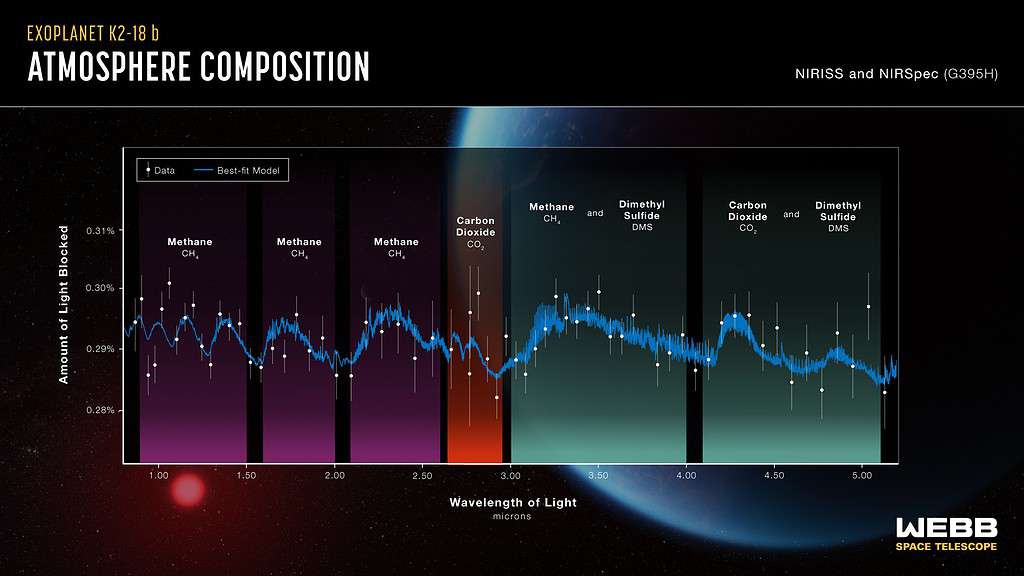Scientists at NASA have found evidence of methane and carbon dioxide (CO2) in the atmosphere of K2-18 b, an exoplanet 8.6 times bigger than earth as Earth. The discovery offers a glimpse into a planet unlike anything in our Solar System and adds to recent studies that suggested K2-18 b could be an ocean planet with a hydrogen-rich atmosphere. There’s also a tantalizing molecule in the planet’s atmosphere.

The new data about the atmospheric properties of this exoplanet came from observations made with NASA’s James Webb Space Telescope (JWST). This new study builds on previous studies in 2020 and 2021 using Webb’s predecessors Hubble and Kepler. K2-18 b orbits the dwarf star K2-18 and lies light-years from Earth in the constellation Leo.
Researchers had previously suggested K2-18 belonged to a new class of exoplanets called “Hycean” worlds. The name comes from a combination of “hydrogen” and “ocean” as these worlds are covered in a hydrogen atmosphere and could support oceans. Water worlds are very interesting for astrobiologists because, without water, there can be no life. However, research on the habitability of Hycean worlds isn’t very detailed.
Using JWST’s instruments, this new study has identified methane and carbon dioxide in a hydrogen-rich atmosphere on K2-18 b. This supports the hypothesis that there may be a water ocean on the planet. The observations also provided the possible detection of a molecule called dimethyl sulfide (DMS). On Earth, DMS is only produced by living organisms.
“Our findings underscore the importance of considering diverse habitable environments in the search for life elsewhere,” Nikku Madhusudhan, an astronomer at the University of Cambridge and lead author of the paper announcing these results, said in a news release.
The mysteries of K2-18 b
K2-18 b lies in what NASA calls the habitable zone, a region around a star where planets with liquid water could be present. Its interior likely has a large mantle of high-pressure ice, similar to Neptune, but with a thinner hydrogen-rich atmosphere and an ocean-atmosphere. However, the ocean might be too hot to be habitable or liquid.

Describing the atmospheres of exoplanets such as K2-18 b involves discerning their gas composition and physical attributes. This is a very dynamic and challenging field in astronomy, particularly as these exoplanets are outshone by the glare of their bigger parent starts.
In order to overcome this, the researchers analyze can light from K2-18 b’s parent star as it passed through the exoplanet’s atmosphere. Imagine this: when the planet passes in front of its star, it blocks some of the star’s light. But another part of the star’s light passes right above the planet, through its atmosphere. This passage leaves traces that astronomers can review to better understand the exoplanet’s atmosphere.
“This result was only possible because of the extended wavelength range and unprecedented sensitivity of Webb, which enabled robust detection of spectral features with just two transits,” said Madhusudhan. “For comparison, one transit observation with Webb provided comparable precision to eight observations with Hubble.”
Next, the team intends to do follow-up research that they hope will further validate their findings and provide new insight into the environmental conditions on K2-18 b. They will use Webb’s Mid-InfraRed Instrument (MIRI) spectrograph to look for chemical signatures called biomarkers, including dimethyl sulfide (DMS), which could indicate the presence of biological activity.
Researchers are particularly excited about the potential of this molecule because on Earth, DMS is only produced by life.
If the same were to be reported on this planet, it would be perhaps the biggest sign of life outside our solar system.
The paper has been published in The Astrophysical Journal Letters.






